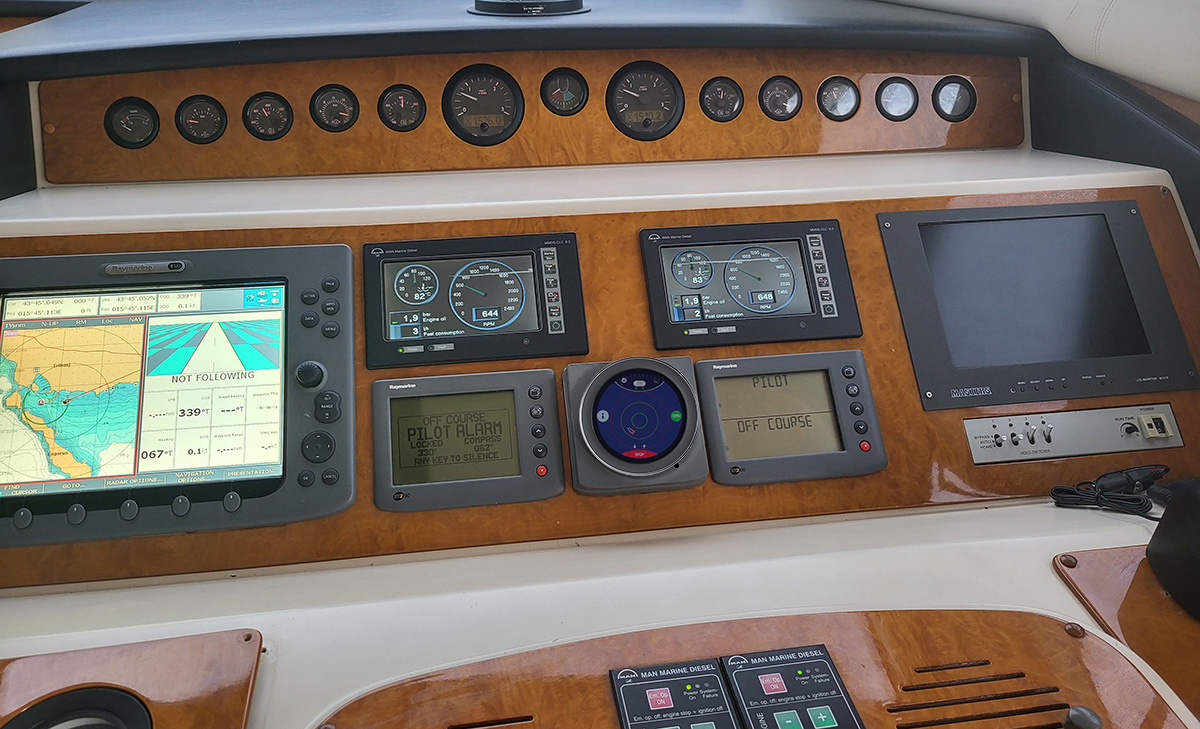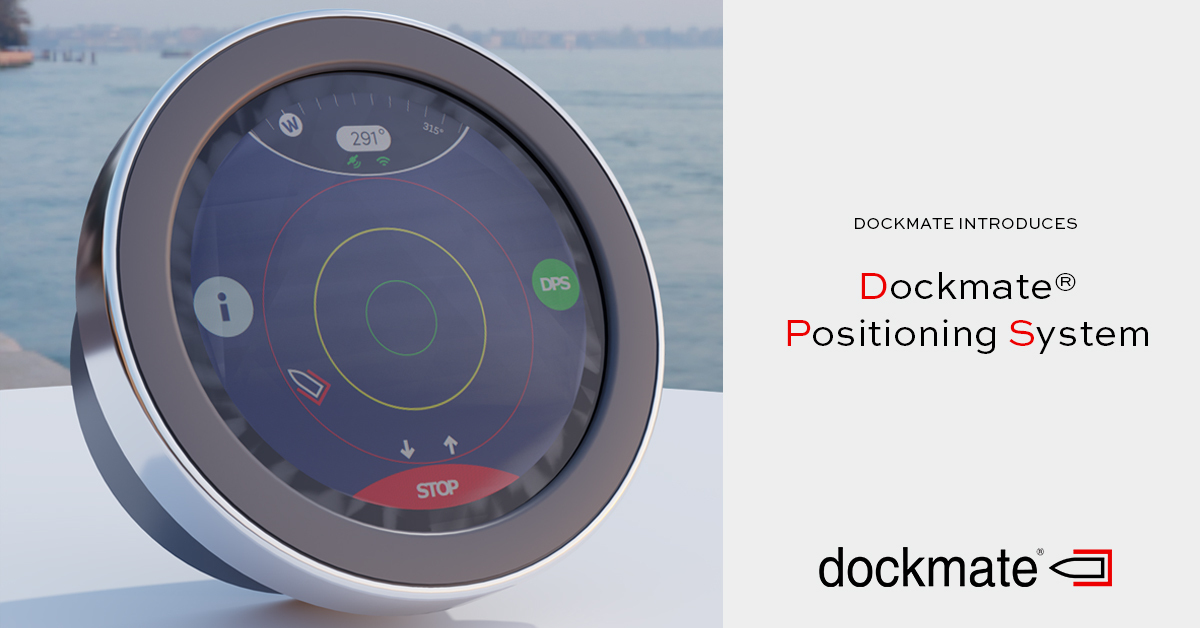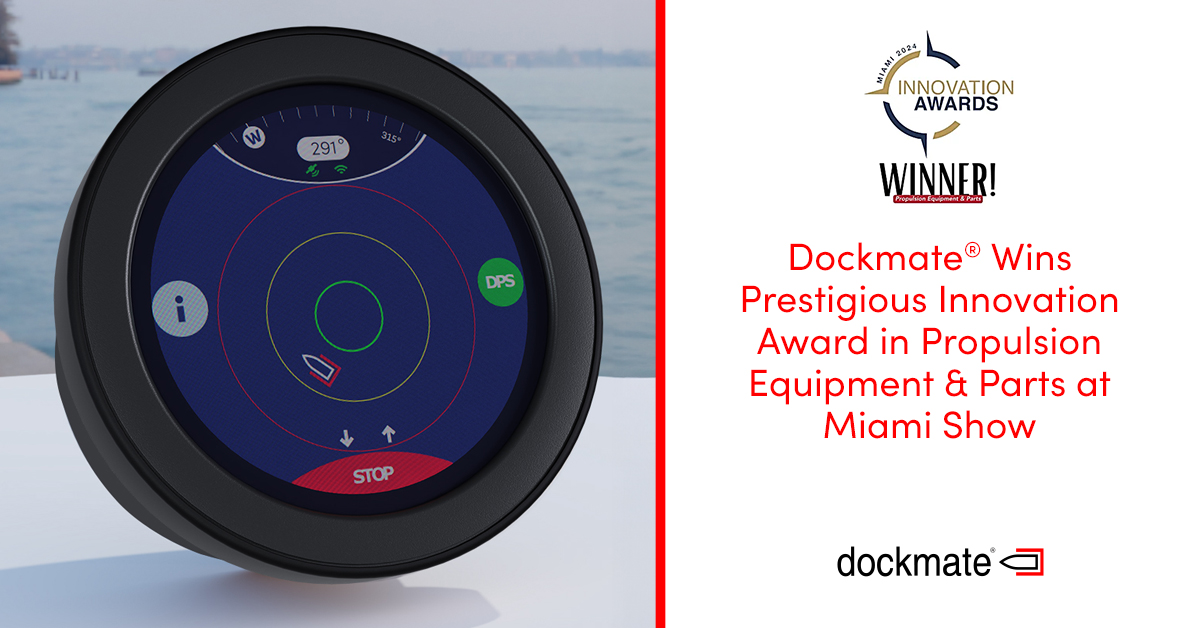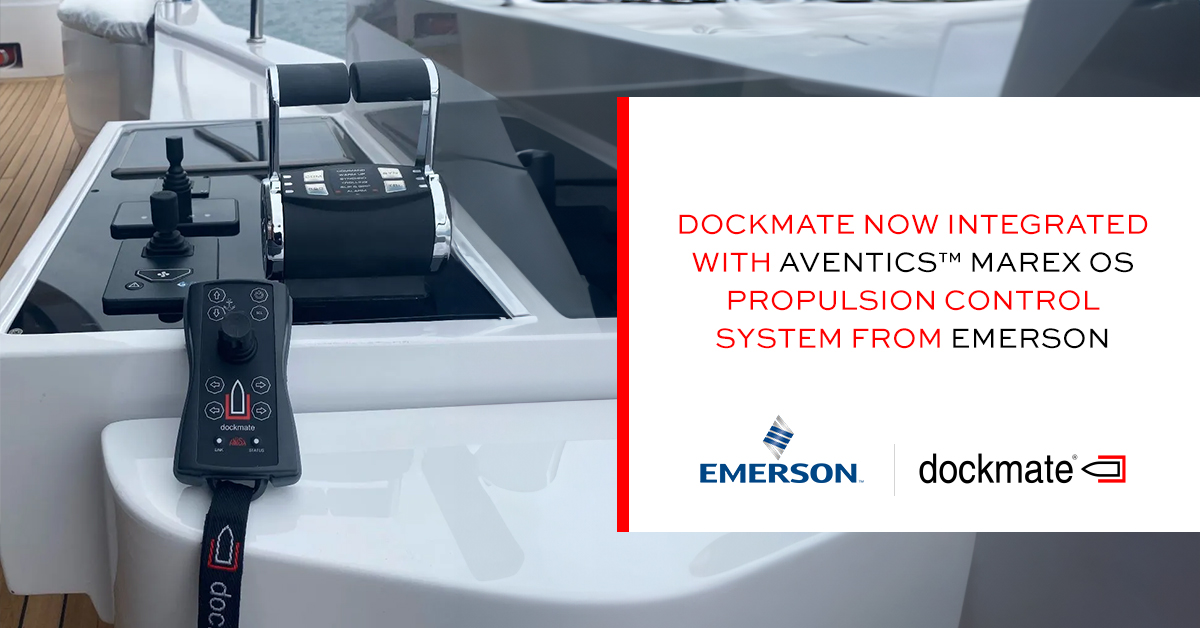Dockmate, the leading manufacturer of advanced wireless remote controls for yachts, announced today the introduction of a new feature for their wireless remote control systems–Dockmate Positioning System (DPS).
Dockmate's DPS Solution: Versatile Operating Modes for Precision Control
Dockmate’sDPS solution has two operating modes: one mode for use on the open water and another mode to use for short periods of time in close quarters.In the open water operating mode, DPS willuse only the engines to keep the boat in its target position. It is ideal for short-handed crews, allowing the captain to step away from the helm to tend to mooring lines and fenders before entering a marina. In the close quarters operating mode, DPS uses both the engines and bow and stern thrusters in concert to keep the vessel inits target position.

“We have spent a significant amount of time and research over the years to ensure that the Dockmate remote control system provides boaters with the best control of their vessels in some of the more stressful situations like docking and close quarters maneuvering,”said Dirk Illegems, President of Dockmate. “Whether you are entering a marina or waiting for a bridge or lock, holding your position while stepping away from the helm can be just as important as having fingertip control when pulling into a dock.Our customers have been looking for a Dynamic Positioning System and we are happy to deliver.”
Dockmate Positioning System is driven by an IMU unit(whichincludesa compass, accelerometer and gyroscope) and a DPS Receiver installed within the vessel, and connects to Dockmate GNSS antennasinstalled on the hardtop. It is designed for installation on any vessel with at least two engines and Dockmate compatible engine and thruster controls. DPS is easy to install and requires only a short calibration sea trial.




